

Stoat
fur . . . and more
by
Mike Oettle
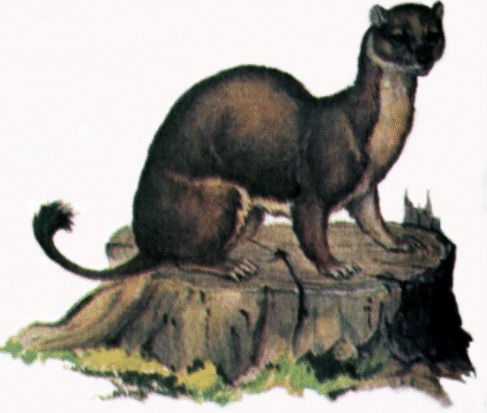
ERMINE was the fur of choice for the rich and powerful in the Middle Ages – which is probably why it is still worn by those few remaining crowned heads of Europe on the rare occasions when they still get dressed up in their full regalia.

Why ermine, you may well ask. The animal in question is not very impressive for most of the year, being a nondescript brown or tan colour, with touches of black, especially around the tail.
But in winter this animal – its zoological name is Mustela erminea, and its common name (when it’s not white) is the stoat – turns white, leaving only its tail black. (The Encyclopædia Britannica gives two other names for it, in fact: short-tailed weasel, and bonaparte weasel.)
M erminea is the species from which Western European kings got their fine robes in the Middle Ages, but there are in fact several related species spread across Europe and Asia. In places where it does not get all that cold in winter, the animal does not turn entirely white (and where the weather gets the coldest, the animal is often found white or tan/white in summer), while in the heart of Siberia are to be found the most prized pelts, with the densest fur.
It also takes the pelts of several animals to make even one robe, since these slender animals are only 13 to 29 cm long (not including the tail), and those with the whitest fur (living furthest north) are smaller than other varieties.
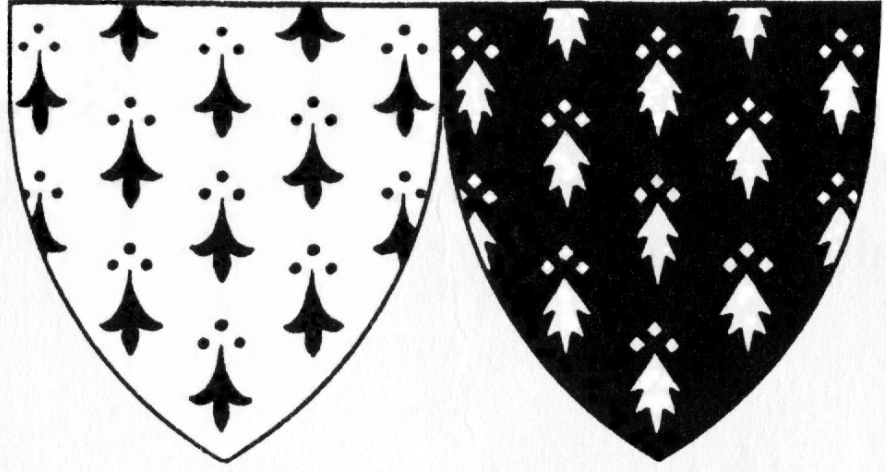
This is why an ermine-trimmed robe has several tails incorporated into it, and why heraldic ermine, an abstraction from the real fur, is characterised by the use of many tails.
How the tails have been drawn has varied down the centuries, and Stefan Oliver’s illustration (above left) shows no fewer than a dozen different stylisations of ermine tails.
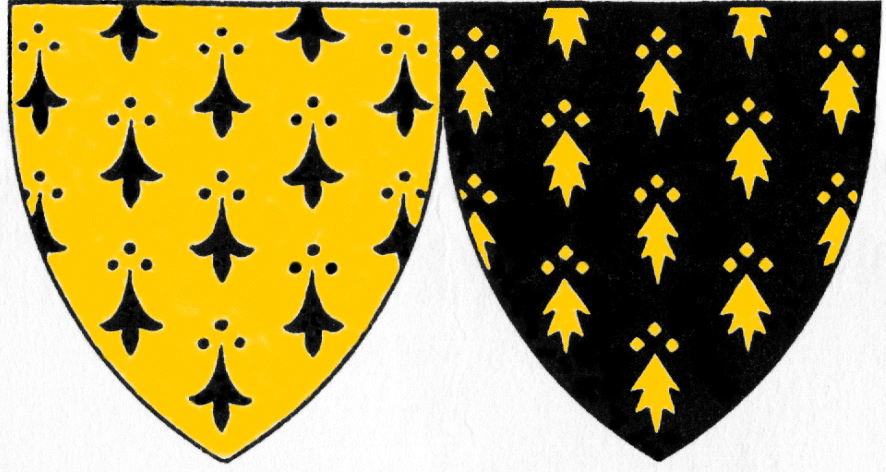
Of course, once the abstraction is made – painting a shield white and putting black tails on it – it becomes quite feasible to vary it. So you have a black shield with white tails, called ermines or, in French, contre-hermines, a gold shield with black tails, giving you erminois, and even a black shield with gold tails, which is called pean.
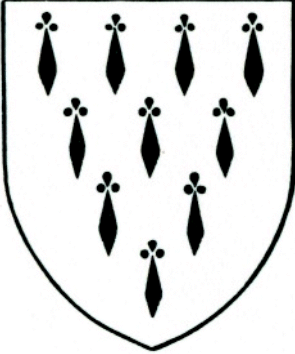
It’s not essential to use these additional names – sable ermined argent is acceptable for ermines (or sable ermined or for pean), as is or ermined sable for erminois. On the other hand, Franklyn and Tanner[1] regard this as being archaic, and refer darkly to “a modern group attempting to revive this system”.
They go even further in their entry for counter-ermine, remarking tetchily: “an obs. term based on Fr. for ‘ermines’ (q.v.). The people who will not (or who cannot) conform to the rules and terms of modern blazon are inclined to make use of it. They also advocate such descriptions as ‘argent, ermined sable’ ‘sable, ermined argent’, ‘Or, ermined sable’, and ‘sable, ermined Or’ on the grounds that such a verbose jumble is easier.” The wording they dislike is longer, but if the terminology is obscure, there might be good reason for stating things in plainer language.
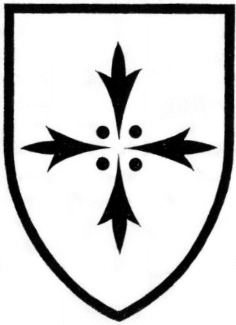
The tails are generally shown semé across the field – distributed evenly in alternating rows, and half-tails visible at the edges – but not invariably so, as illustrated by the shield shown here of the arms of John of Brittany (†1399; also called de Montfort), Duke of Brittany and Earl of Richmond, where the tails are arranged in a triangular shape (or pile).
In addition to the variations on ermine already mentioned, some books mention yet another one, termed erminites, in which each black ermine spot is flanked on either side by a vertical red line. But no modern author has found any actual examples, and it may be no more than “book heraldry”.
Since heraldic ermine is itself an abstraction, it is interesting to note a further abstraction: the cross ermine, comprising four ermine tails, the three dots at the head of each tail becoming four shared between them. The example shown is the arms of Hudelton.
